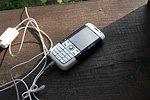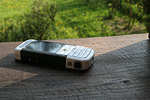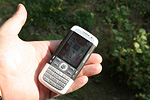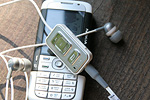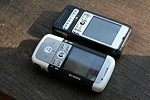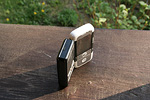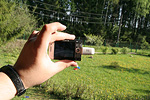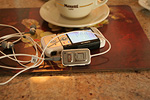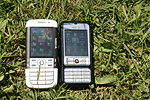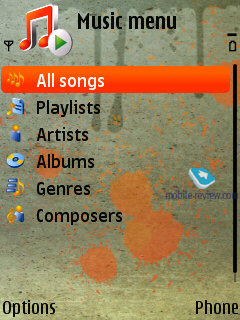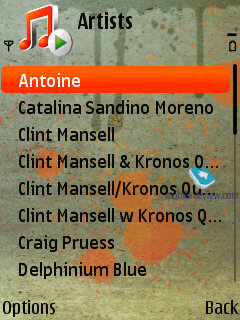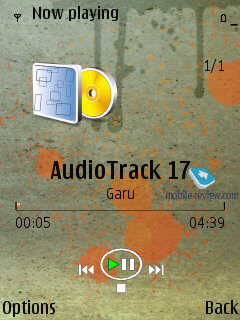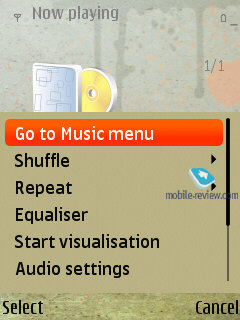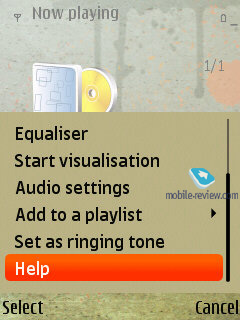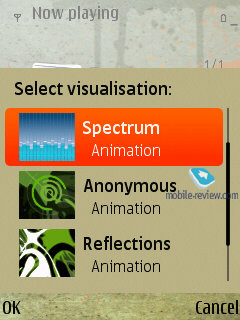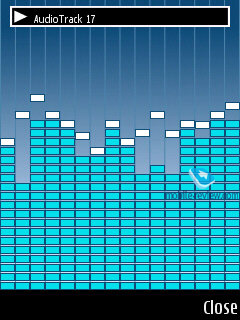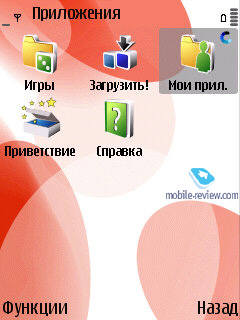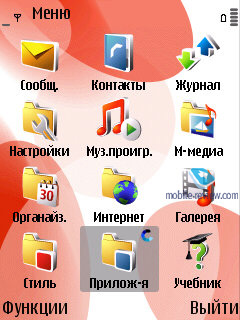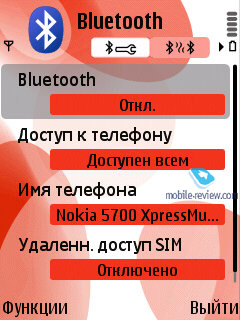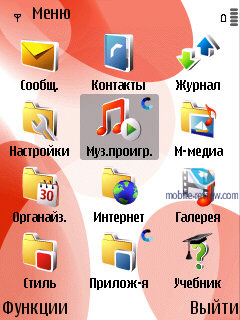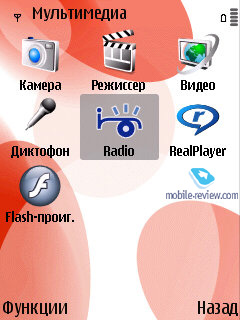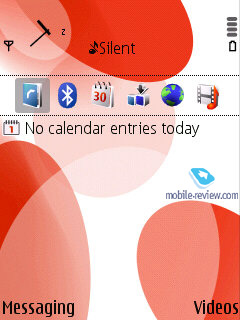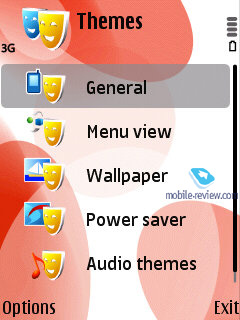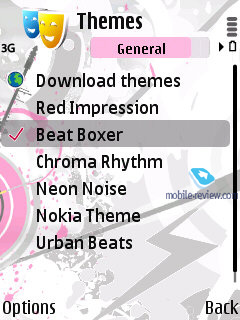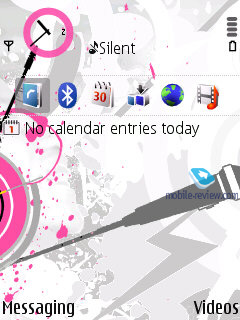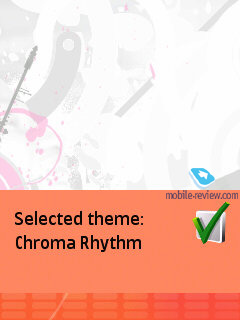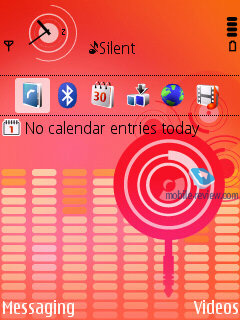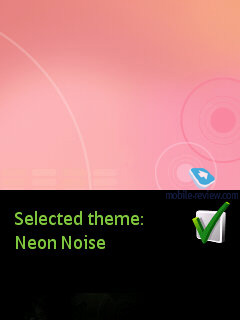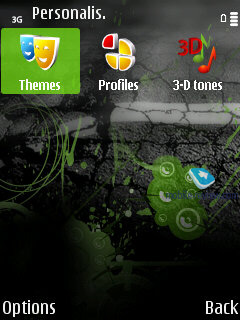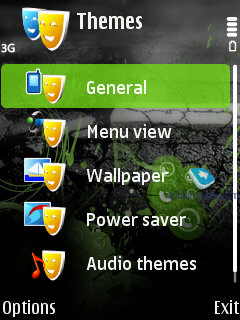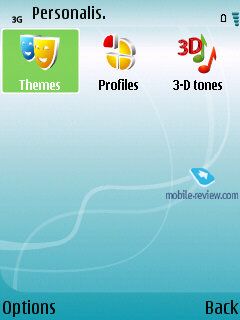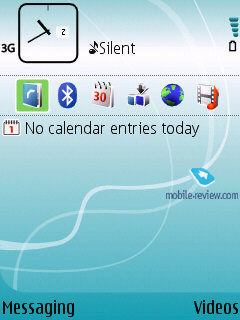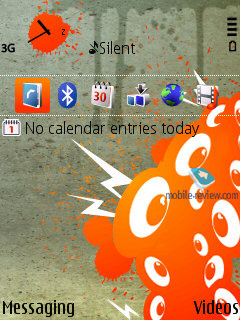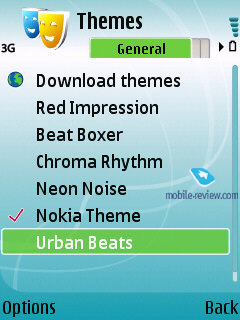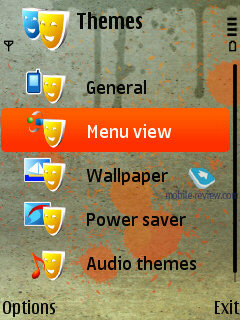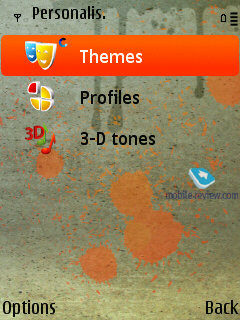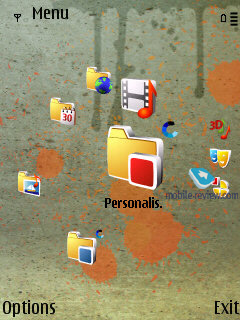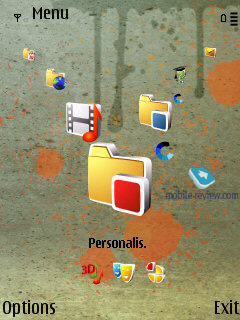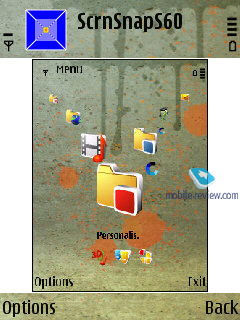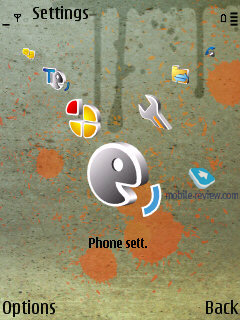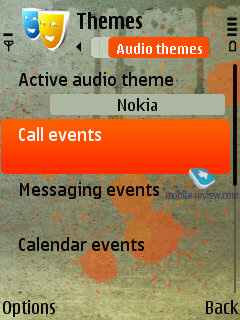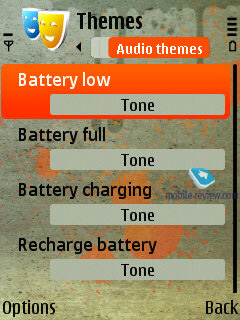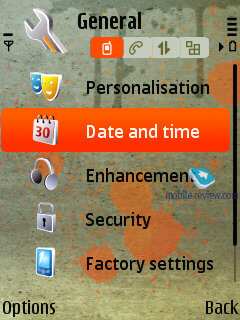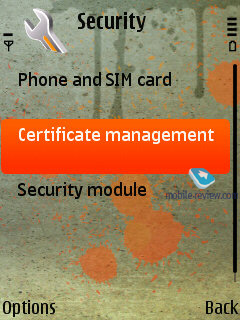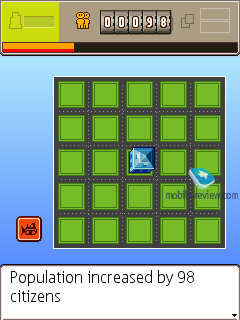|
|
Review of GSM-handset Nokia 5700
Live photos of Nokia 5700
Table of contents:
- Nokia 5700 traits – headphones, remote
- Design, size, weight
- Display
- Keypad
- Controls
- Swiveling section
- Video playback mode
- Battery
- Memory, CPU, memory cards
- Connectivity – USB, Bluetooth
- Browser
- Camera
- Nokia Zine
- Music department of Nokia 5700
- Taking a screwdriver in hands
- Back to music experience
- Player interface
- Performance
- Nokia 5700 versus Nokia 3250
- Interface, preinstalled applications
- Impressions
Sales package:
- Handset
- 900 mAh Li-Pol battery (BP-5M)
- Charger (AC-5)
- Wired stereo-headset and remote control (HS-44 / AD-44)
- microSD memory card (size varies by region)
- USB data cable (DKE-2)
- CD ROM with Nokia PC Suite (not for all markets – not included for Russia)
- User Guide
Nokia 5700 traits – headphones, remote
Everyone knows that the way of XpressMusic line-up wasn’t all sunshine and rainbows during its first years, it wasn’t a rare occasion when XpressMusic ended up in one line with other logos, and it was a mere icon with no foundation. Furthermore, other similar-sounding words confused everybody even more, for example, how could a consumer tell the difference between XpressShare and XpressMusic, as seemingly these were technologies of the same rank. Over at the company they did realize that something had to be changed so as to give the green light to true mid-range music-driven solutions, and for these purposes they decided to develop this brand - XpressMusic. Up until Nokia 5300 release and announcement of the Nokia 3250’s revamped edition last fall, Sony Ericsson’s music phones were in commanding position on the market and this required no further proof. The advent of these products was merely a first step in the right direction, for they by no means could stand up to the already mature Walkman range. Some words on XpressMusic re-launch were said during the announcement of the respective models in New York.
The Nokia 5700 is another step towards development of XpressMusic and it’s a consistent step, the company isn’t looking to come up with a powerhouse in short term, instead, it keeps improving this direction little by little. The major event around the Nokia 5700 would be Philips headphones that are now shipping with Nokia-branded phones. For some reason this fact has been overlooked nearly by everyone, who wrote about the device or the company’s development strategy, even though it is a very crucial facet that has much to do with how Nokia’s product are perceived.

Remember all those gripes with the Nokia 3250, when vast majority of users, to put it softly, came out unsatisfied with the bundled earphones, as for a music-minded phone they left much to be desired. Strange? There are heavier words for this occasion. The centerpiece of the device that should have be put into the limelight in every possible way was negated by a 5-dollar accessory. In a word, all efforts of designers and engineers were simply ruined by putting cheap made-in-China headphones into the box.
And all this took place with the rival on the horizon that traditionally ships one set of earphones (almost) with all models of the range, design may vary, but the quality never changes and is always way above average.
Partnering up with a big brand that has a good name to it in this field was a legitimate decision, as this allowed enhancing the sonic experience delivered by the devices, and at least taking it a step above the today’s level. Philips got the nod for offering fair price/quality ratio and didn’t insist on keeping its own brand on the headphones themselves, being quite content with the right to shout that its earphones were picked by Nokia.
This way, the first product in XpressMusic range to come packaged with Philips-branded headphones is the Nokia 5700. In its turn, Philips doesn’t specify own index for the earphones model and the remote, over at Nokia they have marked them as the HS-44 and the AD-44 respectively.
The remote shipped with the Nokia 3250 or the senior Nokia N91 obviously served as the prototype here. But the differences are many, for starters, the new remote utilizes white soft plastic, which is really marvelous and the earphones along with the remote control seem pretty luxurious. There is no hint of the crudeness that was all around in the previous devices. Regrettably, the handset makes use only of a 2,5 mm jack, mounted on the bottom end ùà åðó 5700, intended for plugging in the remote and only then, you can connect the headphones to the remote control. There is a clip on the wire, so that you can shrink its length with its help. The remote’s console also comes with a clothing clip; the front fascia is clad in metal, which is uncommon for this price-bracket. Sitting right on the remote are skip forward/backward buttons, pick up key, as well as the microphone built into the console. Using the side-mounted hold button you can lock the keys so as to prevent accidental presses. Flipping over to the opposite side, volume controls can be found.





The cord’s total length enables you to throw the handset not only on belt, but also in a bag hanging as low as your knee. The earbuds are made of soft silicon, that’s why we never got rid of the deja vu feeling, since similar in-ear headphones had become par for the course in the Walkman range, albeit those had different color. The sonic experience you get with them is pretty much in lime with Sony Ericsson’s offerings, though the latter still is a fraction ahead in this sense. Technically, certain tracks sound equally well in either headset. Thinking of the earphones supplied with the Nokia N91, we can say for sure that they are pretty much comparable sounding-wise with adjustments for worse build quality and materials used in the senior model plus the Nokia N91’s own musical merits. On balance we have the following: for the very first time, flagship products aside, Nokia has come up with headphones this good. And it trumps Walkman-branded solutions not with quality, but with a real remote control coming included. For Sony Ericsson products, for the most part, it is an optional goodie.


The XpressMusic offerings to come will see various headphones types, apart from the abovementioned in-ear style, these will be clip-on earphones and also sporty earbuds. Below are some designs of these headsets.
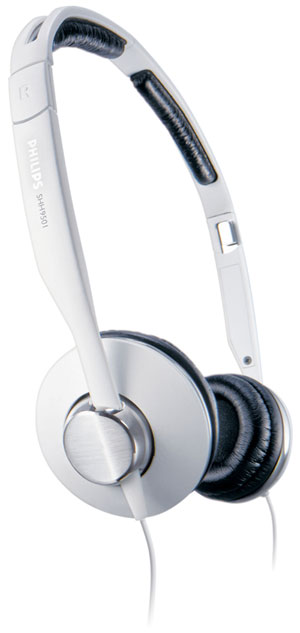
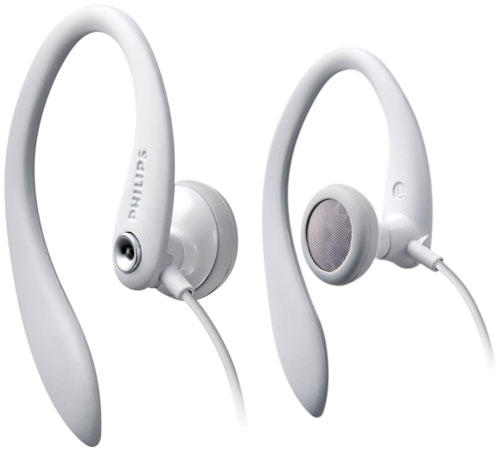
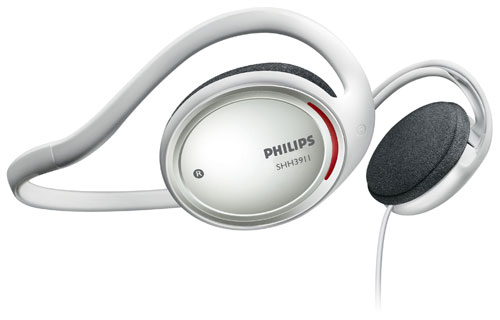
Back to the table of contents >>> Design, size, weight
Following from the headsets colors, is another not particularly common hint, as Nokia, has seemingly decided on what color all XpressMusic line-up members will share – apparently, this is white. I shall remind you that previously there were red-and-white handsets, so many had a strong feeling that they were banking on flamboyant colors. A kind of parallel with Sony Ericsson Walkman’s orange.
Measuring a comfortable 108.2x50.5x17.3 mm and weighting 115 grams, the 5700 is quite easy to handle – you can carry it wherever you want, be it jeans or a shirt pocket.


The Nokia 5700 comes in a choice of three colors – black, red and grey. But regardless of the variant you pick, the swiveling section as well as the top part will always retain white lacquered plastic. It is pretty smudge-resistant and hard, which makes small scuffs and scratches keep low profile on it. But if the device receives some damage after falling down, a scratch like this will surely pick up dirt and dust in no time. The color itself is indicated by the display frame and also the side plates and the rear.


Back to the table of contents >>> Display
The handset comes equipped with QVGA display (240x320 pixels, 2.2 inches, 34x45 mm), which shows up to 16 million colors (TFT). Much like many other Nokia-branded devices, the screen here utilizes mirror layer that makes it a better performer under direct sunlight and keeps the picture readable. Also the 5700 boasts an ambient light sensor that adjusts display backlighting to fit current environment best.

Unlike other models by the company, for example the Nokia 6110 Navigator, the Nokia 5700’s display doesn’t do such a decent job when put in the sun. In a word, you need to find the right angle to get better quality of the picture that gets considerably washed out on top of everything else, which may bring certain problems. Some can’t get on with this aspect in the 5700, and on the other hand, some consider it pretty much okay. Whichever camp you are in, the screen found on this phone is quite tidy.

The display can accommodate at least 8 text and 3 service lines, some modes sport up to 12-line (text) capacity.
Back to the table of contents >>> Keypad
Among the queer moves is placement of the C and Menu buttons, which are now flanking the display as hair-thin lines with captions beneath. Even after a month of quality time with the handset I couldn’t make myself start tapping the keys themselves rather than their captions, which never responded. This kind of confusion is quite amusing but occasionally things get irritating. Furthermore, sometimes when handling the functional keys you will touch these buttons as well, this doesn’t bring a great deal of pleasure either. In a word, by mounting the buttons this way, the maker has delivered a heavy blow to the keypad’s ergonomics.
The captions below these side keys wear down relatively fast, since the buttons are made of rubber and the user just happens to push them quite often.


At first glance, there is nothing wrong with the joystick, but on a closer inspection you come to realize that it is placed not very accurately and somewhat displaced. Occasionally it also suffers from that false response issue, which is also a disappointment. The joystick is rimmed with white plastic which readily picks up smudge and dirt if you carry the 5700 in pocket.
The numeric keys enjoy terraced layout and are quite comfortable to use, so we can’t fault them for any serious downsides. Some of the released handsets the key column on the right, which starts with “3”, has the problem of sticking out of the surroundings, while it is not meant to. Though this doesn’t affect experience in any crucial way, visually this lends the keypad somewhat awkward feel.

All keys are lit in white, which is well-visible in various environments.


Back to the table of contents >>> Controls
The spines of the handset are clad in rubber skin, while the underside utilizes plastic. It turns out to be a pretty challenging task to open the back cover without reading the manual, so the 5700 actually comes with a guide literally stuck on the back.


The left-hand side houses the volume controls, and the lens of 2 Mpix camera and the LED flash right on the swiveling base. Flipping over to the right side, Infrared window, miniUSB slot behind rubberized door, as well as hot-swappable memory expansion slot and charger socket can be found. The flap is made of soft rubber, so seemingly it won’t pull off or lose shape with time, although these possibilities shouldn't be ruled out in case of careless treatment.





Back to the table of contents >>> Swiveling section
The design trait that has migrated from the previous model and puts these two devices in the same league is the swiveling section. The mechanism found in the new model is subjectively more durable, it feels sturdier, plus there is no memory card slot inside, which is also an improvement.


The section sits and rotates on a pivot; it is firmly mounted and we can hardly think of any possible gripes with it. The base gets securely fixed in every position and upon turning it you hear a satisfying click. It can’t swivel on its own while in a pocket – it simply won’t find enough room for this. The same holds true for bags, unless you throw it into a sports bag, where all things are always messed up, and then decide to run up a hill or two. But an ordinary user won’t experience any hardships with the swiveling section, and most of the time the model appears to be a mere candy-bar.

And again, pitting this device against the Nokia 3250, we can say they maker has done away with most of accidental presses both of the numeric keys and the player controls. But nothing is perfect, and someone has to give, so this time around it is the joystick that lives its own life, which often results in accidental calls. That’s why, locking the keypad is a must – to do this, push the power button and pick this item in the menu. The 5700 comes with no auto keypad lock feature, which can be made up for with a third-party application.
The section can be twisted through 90 or 270 degrees, in these cases the camera application kicks in. Turn it 90 degrees and the lens faces outwards, while the display jumps into the viewfinder mode. In fact, this concept is known for its numerous appearances in Nikon’s digital cameras, which was the first maker to implement it, and the truth is, there is quite an army of fans of this design.


The swiveling action in the Nokia 5700 is not perfect, and there are several reasons for that. First up, upon base rotation, the camera application doesn’t start up instantly; actually the interface pops in about 2 seconds. And I’m afraid nothing can be done about it, since it’s the characteristic feature of such models and you’ll always have to wait. Second, missing side-mounted keys force you to punch the joystick to snap and move around the menus. But it is only 0,5 cm away from the swiveling base and people with big hands will find this distance way too short, so their finger will keep bumping into the casing. Apparently, the best way to hold it would be in the right hand with your thumb on the joystick and bent forefinger supporting the twisting section. In this scenario the latter won’t touch the camera lens. Naturally there are different grips you can use, but they didn’t feel convenient – either camera lens or display got covered.
The camera application can also be managed via the music controls placed on the swiveling base. In this case you hold the main part of the phone with one hand, while the other one does shooting or zooming. It might be the way to go if you want to handle it with two hands, for one-handed device management this scenario is not an option.
Conversely, setting up the camera is easier with your left hand, even though you cover the display in this case, but it’s not that crucial here. The 270-degree turn will come in handy for taking self-shots.
When you twist it through 180 degrees, the media player jumps into action, and the front now features dedicated music keys (skip forward/backward, stop, pause, play – four buttons in sum) rather than the keypad. And this time around the player kicks into gear almost instantly (in less than one second). The secret behind such blazing fast speed is the player application itself, which is always in the memory and swinging the base simply brings it onto the screen.
Regardless of the position the swiveling section is in, you still receive calls, and furthermore, while in the camera mode, you can actually talk in such quaint way and the other end of the call won’t complain about muffled voice whatsoever. By the way, the camera can also work with the twisting base in default position; some users will find this feature interesting.
The swiveling section’s bottom part holds the loudspeaker that plays back music and call alerts. The other speaker is found on the top left. So when you are in the music mode, both speakers end up on one side, which, subjectively, makes them sound more vibrant.
Back to the table of contents >>> Video playback mode
I’d like to emphasize, that video playback mode implies turning the base rightwards through 90 degrees (so the camera looks at you) - in this position you can lay the phone on a table and comfortably watch video files. Upon twisting the base, the picture automatically goes full screen. With the speakerphones facing hard surface (in our case it is a table), the sound gets obviously louder. In future gadgets this sort of swiveling section will become widely adopted, as it is very handy for viewing videos. Also such design and form-factor are almost perfect for holding video conferences (remember the way the Nokia 5700’s camera stares at you).
Back to the table of contents >>> Battery
The handset utilizes a 900 mAh Li-Pol battery (BP-5M). As the manufacturer claims, the battery provides up to 3,5 hours of talk time and lasts up to 280 hours in stand-by. In conditions of Moscow networks the handset managed to stay up and running for about 3 days under medium load (45 minutes of calls, 2 hours of music, 20 minutes of gaming and 20 minutes of web surfing). More intensive usage pattern decreases the battery life to 1 day. Browsing Internet pages for 4 hours straight drained power from the battery, while loud non-stop music playback leads to the same result within 9 hours, for video the battery life makes up 2 hours. That said, you should expect one-two days of operation, depending on your particular usage pattern. It takes the battery 2 hours and 15 minutes to charge from empty to full.

One possible drawback is that after first signal of low battery, the battery runs down very quickly. In other Nokia headsets the time from the first low battery signal to the empty battery is longer.
Back to the table of contents >>> Memory, CPU, memory cards
The Model is based on MX300 solution from Freescale, the first device to feature this hardware design was the Nokia 6290, followed up by the Nokia N76. The distinguishing feature of the gadget is its sole CPU, this is a single-chip solution. This CPU runs at high frequency, namely ARM 11 368 MHz. And at the same time, the processor is responsible for all operations, that need computing power.
There is 18Mb of RAM available to the user and about 40 Mb of flash memory. MicroSD memory cards with up 2Gb onboard are supported, the memory expansion slot is hot-swappable.
Back to the table of contents >>> Connectivity – USB, Bluetooth
USB. The 5700 houses the miniUSB-socket (no charging-over-the-cable is available, though), upon connection you are free to pick from USB Mass Storage, PC Suite, and Modem mode. With USB ver 2.0 in its pocket, the handset presents you with about 800 Kb/s speed in USB Mass Storage mode.
Bluetooth. The smartphone carries EDR-enabled Bluetooth 2.0 onboard, as well as the following profiles:
- BIP-ImagePush;
- DUN-GW;
- FT-Server;
- HandsFree-AG (1.0);
- Headset-AG;
- OBEX;
- OPP-Client;
- OPP-Server;
- A2DP;
- SIM Access-Server.
The Bluetooth implementation is, as always though, nothing to complain about, we encountered no issues with handling this type of connections, the sound is quite decent, but still has some limitations characteristic of wired headphones.
Back to the table of contents >>> Browser
The only built in browser now is OSS Browser 2.0, dubbed as Nokia Browser from this moment onwards. You can get full information about browser in our dedicated article. Screen rotation is not supported in the Nokia 5700, though.
Back to the table of contents >>> Camera
Just like many other S60-powered devices, the 5700 houses a 2 Mpix CMOS-camera manufactured by Toshiba. But unless you are in great light conditions, the shots will keep going out noisy and blurry and regrettably the LED flash here doesn’t save the day.
Using the settings you can pick one of the following image resolutions – 1600x1200, 1152x764, 640x480 and 320x240 pixels. The pictures quality varies from High to Basic, with Normal as the happy medium. Such shooting modes as single shot, multi-shot, self-timer (10, 20 or 30 seconds) are available. You can also make use of the night mode, white balance settings (Sunny, Incandescent, Fluorescent). Sepia, Black&White, Negative overlays help you to alter color settings. As it was mentioned above the flash utilizes LED technology. Digital Zoom can be activated by punching the navigation key, but in the end you won’t be happy with it, as the bundled editor gives you an opportunity to zoom in the picture in the view mode with overall better image quality.
 |
 |
| (+) maximize, 1600x1200, JPEG |
(+) maximize, 1600x1200, JPEG |
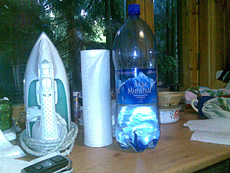 |
 |
| (+) maximize, 1600x1200, JPEG |
(+) maximize, 1600x1200, JPEG |
 |
 |
| (+) maximize, 1600x1200, JPEG |
(+) maximize, 1600x1200, JPEG |
 |
 |
| (+) maximize, 1600x1200, JPEG |
(+) maximize, 1600x1200, JPEG |
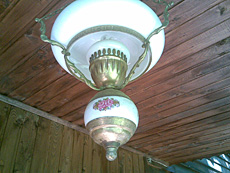 |
 |
| (+) maximize, 1600x1200, JPEG |
(+) maximize, 1600x1200, JPEG |
 |
 |
| (+) maximize, 1600x1200, JPEG |
(+) maximize, 1600x1200, JPEG |
 |
 |
| (+) maximize, 1600x1200, JPEG |
(+) maximize, 1600x1200, JPEG |
 |
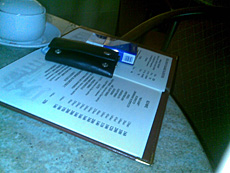 |
| (+) maximize, 1600x1200, JPEG |
(+) maximize, 1600x1200, JPEG |
 |
 |
| (+) maximize, 1600x1200, JPEG |
(+) maximize, 1600x1200, JPEG |
 |
 |
| (+) maximize, 1600x1200, JPEG |
(+) maximize, 1600x1200, JPEG |
 |
 |
| (+) maximize, 1600x1200, JPEG |
(+) maximize, 1600x1200, JPEG |
 |
 |
| (+) maximize, 1600x1200, JPEG |
(+) maximize, 1600x1200, JPEG |
 |
 |
| (+) maximize, 1600x1200, JPEG |
(+) maximize, 1600x1200, JPEG |
 |
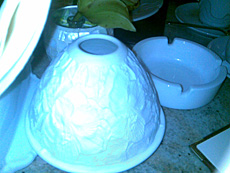 |
| (+) maximize, 1600x1200, JPEG |
(+) maximize, 1600x1200, JPEG |
 |
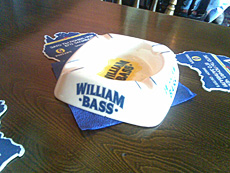 |
| (+) maximize, 1600x1200, JPEG |
(+) maximize, 1600x1200, JPEG |
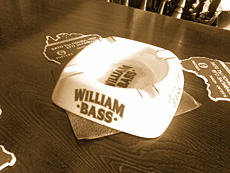 |
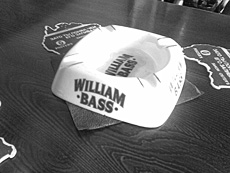 |
| (+) maximize, 1600x1200, JPEG |
(+) maximize, 1600x1200, JPEG |
 |
 |
| (+) maximize, 1600x1200, JPEG |
(+) maximize, 1600x1200, JPEG |
Comparison with Nokia 3250:
| Nokia 3250 |
Nokia 5700 |
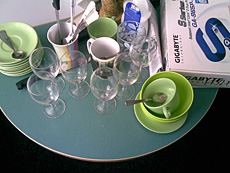 |
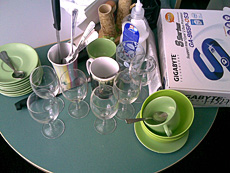 |
| (+) maximize, 1600x1200, JPEG |
(+) maximize, 1600x1200, JPEG |
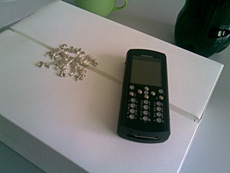 |
 |
| (+) maximize, 1600x1200, JPEG |
(+) maximize, 1600x1200, JPEG |
 |
 |
| (+) maximize, 1600x1200, JPEG |
(+) maximize, 1600x1200, JPEG |
 |
 |
| (+) maximize, 1600x1200, JPEG |
(+) maximize, 1600x1200, JPEG |
 |
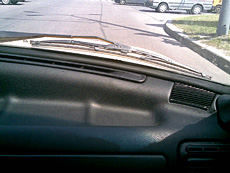 |
| (+) maximize, 1600x1200, JPEG |
(+) maximize, 1600x1200, JPEG |
You can also take panoramic shots and edit snaps/video with the bundled image editor.

(+) maximize, 483x228, JPEG
Video is recorded in quite mediocre quality. The 320x240, 176x144 and 128x96 pixels resolutions at 15 FPS are available, the 5700 saves all clips in .3GP files, and some of them may have the sound turned off – it’s up to you to decide. As for the time limits, they are non-existent now, except the MMS-mode.
Video sample 1 (mp4, 2.1 mb)>>>
Video sample 2 (mp4, 2.2 mb)>>>
Video sample 3 (mp4, 2.0 mb)>>>
Back to the table of contents >>> Nokia Zine
In an effort to promote its music-heavy solutions Nokia has established www.nokiazine.net, where you can upload an array of new games, tunes, videos and also take part in various contests. Although there are no special promotions for this site and many users are completely unaware of its existence, in future it will be the core of numerous Nokia’s campaigns,so for now the Nokia 5700 is merely of the models which you can grab content from this resource for.
Back to the table of contents >>> Music department of Nokia 5700
This is the second music-centric device by Nokia, following up the Nokia N91, to feature a dedicated CPU for sound processing. Honestly, I didn’t feel enthusiastic about this information at first, as the sonic experience delivered by other handsets was pretty much in line with the Nokia 5700. This is what the manufacturer has to say on its page:
- Share the groove in Hi-Fi sound with built-in stereo loudspeakers
- Crystal clear Hi-Fi sound quality with dedicated audio chip
Audio chip, Hi-Fi sound quality – the latter was that last straw convincing me that in this very case we were dealing with wild marketing activities and everything that followed was made solely with the view of proving my guesses with some documents and putting my paranoia to rest. If some don’t quite catch it, why your humble servant couldn’t stand this – well, Hi-Fi sound quality is a solid myth, and different companies have perverted the original meaning of this term so much that only a handful of people still know what this Hi-Fi is for. Standing for High Fidelity, this literally means reproduction of a song as close to the original as possible. I’ll keep mum on AAC or MP3 standards that distort sound automatically, but these are the file types the handset deals with while tacking on own distortions. This is something even my definitely not ears-for-music can discern.
Without delving too deep into the subject, I simply took the Nokia 3250 and listed to one and the same track through the headphones shipped with the Nokia 5700. The sound quality turned out to be comparable and in some ways the Nokia 3250 was even superior. So it seemed the issue was settled and the review was about to wind up. What a sweet delusion it was, since a few minutes later this review got postponed.
But to get rid of all suspicions once and for all, and prove absence of a dedicated audio chip, we summoned Alexander Dembovsky, the editor of our digital music section. The cause was measuring musical merits of various devices via Right Mark Audio Analyzer (RMAA). And in the meantime, along with Sergey Kuzmin,we didn’t go sophisticated ways and decided to check out how the earphones, coming packaged with the Nokia 5700, sound when paired up with the Nokia N91. They did well and didn’t fall flat compared to the original headphones. And then my companion decided to boast about his brand new Sony MDR-EX71, which was his choice for the Nokia N91. But we stumbled upon first quirk – these headphones plugged in the Nokia 5700 (via the remote) delivered abysmal sound quality. Just for fun, we started comparing various headphone types with the Nokia 5700, the Nokia 3250, the Nokia N91. And in all cases, of all the earphones we tried out with the Nokia 5700, the default headphones were the better performers. On its heels are Sony Ericsson’s earphones, other types produced either muffled sound or put noises into sound. “That's where the shoe pinches” – we thought. It turns out, the Nokia 5700 is the first Nokia-branded device, where they have finely tuned the sound channel for use with the bundled headphones, so as to put them to better use.
I shall make a reservation that clip-on headphones performed quite well, almost as well as the bundled headset. It is quite another matter though that finding earbud-style earphones for this handset will be quite a challenge. Most users will run into the problem when their headphones will sound worse than the default headset, or at best, in the same way. Basically, you won’t get the phone sound times better like it was with the Nokia 3250.
While Alexander was setting up his magic devices, we were at a loss how this chip worked and what it actually did since everything revolved around headphone type. And moreover, sound effects and equalizers almost didn’t make any difference. The Nokia 5700’s default earphones performed with other devices as follows:
- Nokia N91 – high volume, good audibility, rich sound;
- Nokia 5700 – average volume, lacks power, poor bass, flat sound, but generally music sounds pretty good;
- Nokia 3250 – average volume, insufficient power, bass is there, but quite weak, somewhat richer sound than in the Nokia 5700;
The figures we got with RMAA proved us right and that’s the place where we were to wrap it all up, but the hunger for explorations had the upper hand. On the Nokia 5700’s diagram you can see that basses are completely messed up.
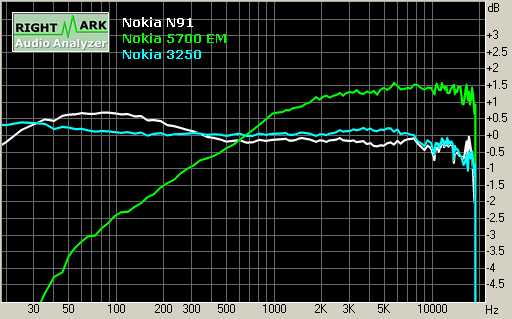
Despite general performance rating “Good”, the 5700 is obviously substantially different from the Nokia N91 and the Nokia 3250, albeit the latter two are rated “Good” too. Though, take a look at the numbers the Nokia N91 and the Nokia 3250.
Eventually we came to a hypothesis that if the Nokia 5700 actually retained an audio chip, then it would have something to do only with sound effects and we turned bass full blast with the help of the customizable equalizer. Much to our surprise, the sonic experience morphed into something very different, the sound no longer was flat and more importantly, bass finally stepped in. Learn more about the results of this test here.
Without the equalizer on, the Nokia 5700’s frequency response looked the following way:
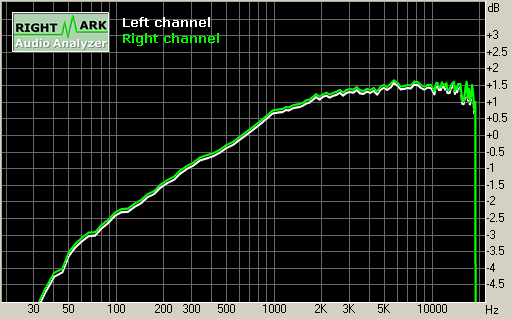
And after applying the equalizer its frequency response changed considerably. Undoubtedly, it was still lagging far behind the other two devices, but few people can catch the sound beyond 50 Hz, so a dip here is not a big deal.
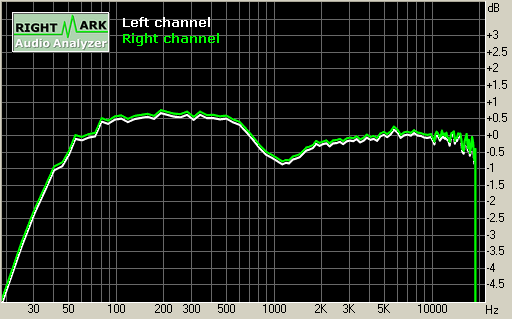
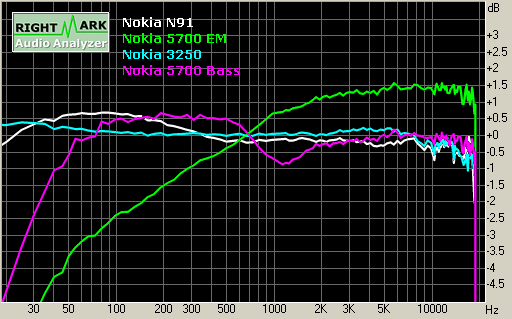
Back to the table of contents >>> Taking a screwdriver in hands
As one of the S60 representatives neatly observed, you have to be content with the very availability of the audio chip, and what it actually is – well, that’s the maker’s confidential information. A statement like this doesn’t make much sense, if only you don’t intend to conceal some of the model’s real specifications, since the competitors will easily do just the same thing as we did.
This way, we put all our meetings and work aside and headed for the nearest shop with an intention to get another Nokia 5700 and also check out how it sounded, though it was no different from our unit (commercial edition as well). The reason behind buying another handset is simple – we get the right to tear it apart and examine its inners for research purposes. Nobody guarantees that we will understand something when we get under the 5700’s hood.
Before that moment I had been closely studying the Nokia 6290, as the first device running on Freescale platform with ARM 11 369 MHz CPU inside. Sound and stereo-speakers implementation were interesting, but basically it wasn’t something to get enthusiastic about. They upgraded the components one more time, however in general its sound system was revolving around two ASIC: Rapido and Avilma. The leading ASIC was Rapido, which radio, as well as Bluetooth linked up with, while Avilma managed the audio jack and had class D amplified integrated, powered by TPA2012D2 chip. Avilma also played host to the vibro-motor.
That is, Rapio handles sound processing, if it is FM-radio, then it doesn’t go through any kind of processing and beamed to headphones as is. If we are talking about the media player, the signal gets amplified in Avilma and then is passed into external headphones. Also, via Avilma the sound goes to inbuilt speakers, so no matter how you look at it, the entire music department boils down to ASIC Avilma. Similar design is employed in the Nokia N76, with several adjustments, though those are minor.
Curiously, the Nokia N91, which many consider the benchmark when it comes to sound in mobile phones, enjoys this circuit design as well – two ASIC, of which one is the music-minded ASIC N2200, that processed the signal. Apart from greater power we see the N2000 (amplifier) that manages headphones connection and acts as an amplifier. A dedicated DAC is also in place – N2000. In other words, the chips are integrated to a lesser extent, which is a good thing (the hardware platform is also different, which is crucial). Presence of the dedicated audio chip makes the Nokia N91 one unique phone.
So, having taken the Nokia 5700 to pieces, guess who we met – old friends, Rapido and Avilma.
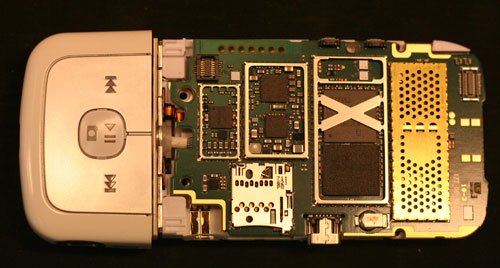
But here is one of the differences – the AIC33 is onboard, which is a typical DAC, like in the Nokia N91.

Well, let’s take a plunge. Design-wise the handset has a strong resemblance to the Nokia N91, although the components are simpler - DAC AIC 33 (Hi Fidelity as they claim), and also a dedicated amplifier TPA4411, and all these amenities are connected only with the external headset (2,5 mm audio jack on the casing). The built-in speakers haven’t lost an own amplifier – it is TPA2012D2 chip. If you want to learn more about these chips, their specifications are available at the manufacturer’s page - Texas Instruments. But for now our top priorities are:
- Sound beamed to headphones is processed by DAC, to speakers - not;
- Sound beamed to headphones gets amplified and processed;
It is legitimate to conclude that the quality you get with earphones and built-in speakers is different. Previously we could attribute that feel to our ears, which are not particularly good for music, but now we have a firm explanation, sound is indeed different.
From subjective point of view, the Nokia 5700 outputs lower volume via the external speakers compared to the Nokia N91, Nokia 3250. At that the sound on the latter two models is too vibrant, which doesn’t do credit to it, but this trait appeals to the users, as it makes tracks livelier. At the same time, the Nokia 5700’s speakers, as many claimed, seemed muffled and sounded as if there was a barrier standing before it. The sound produced by the speakers is pretty much flat. By and large, my conclusion, based on subjective feelings, that Hi-Fi sound quality in speakerphone mode is a mere marketing move, has received solid foundation.
Back to the table of contents >>> Back to music experience
Now that we have made sure, that we weren’t misled with the dedicated chip, we are moving on to our music tests. The main task was to find out if an unprofessional listener could notice the difference in sounding between Nokia N91, Nokia 5700, Nokia 3250 and Samsung E740, Sony Ericsson W880i. As always we hid the gadgets, and in all tests we used the headset shipped with the Nokia 5700. We were a little perplexed about the results.
| |
Sound quality (subjective rating on ten-point scale) |
Volume (subjective rating on ten-point scale) |
Average rating for playback of various tracks (subjective rating on ten-point scale) |
| Nokia N91 |
8.1 |
9.2 |
8.7 |
| Nokia 3250 |
7.6 |
7.9 |
7.7 |
| Nokia 5700 |
7.9 |
6.9 |
7.1 |
| Samsung E740 |
8.2 |
9 |
8.7 |
| Sony Ericsson W880i |
7.5 |
7.1 |
7.2 |
In other words, the Nokia 5700 got lower ratings than the other gadgets. As the phone beats the Sony Ericsson W880i sound quality-wise, it still ends up behind with its average rating for playing back various tracks. Again we face the controversial point, as the company widely advertises the Nokia 5700 as a music-heavy solution. But in real life the users can’t tell the difference between the 5700 and the competition when it comes to the music department. The audio chip, be it onboard or not, doesn’t make all the difference in the way the phone sounds, which is proved both by subjective ratings and frequency response diagram.
At the same time we can easily claim that all these devices are approx at the same level. The Nokia N91 stands out a little, but it is all thanks to the power, which is volume. As for the rest, the difference in sound quality will pass unnoticed for an average customer.
Back to the table of contents >>> Player interface
The Nokia 5700 doesn’t differ from the Nokia 3260 or other S60-powered devices in terms of the player interface. In the library you can view all tracks, playlists, artists, genres and composers. The playlist item also sports Recently added, Recently played tracks and Favorite song.
Shuffle, as well as Repeat modes are enabled. Although there are only four equalizers you can come up with your own settings, but at the end of the day, they don’t bring about completely different sonic experience, saving for bass, when the sound gets to where it should be. Traditionally you can enable Stereo Widening and boost volume and sacrifice quality for that.
Another thing of note about the 5700 is visualization, which can be either Album Art or pre-installed flash clips (four in our unit). They are not rhythm-keyed to music, just go on and on in an infinite loop, which is not particularly fascinating, even though they are displayed full-screen.
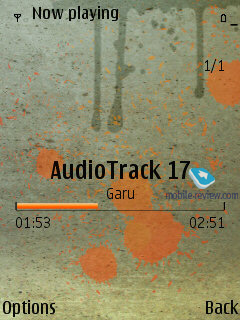
Also, similarly to the Nokia N91, the player is always loaded in the handset’s memory, which makes starting it up a matter of less than a second. It took the Nokia 3250 2-4 seconds to call up the player, by the way.
Back to the table of contents >>> Performance
Much like the Nokia 6290, this model does a decent job in this department and puts up figures typical for this generation of devices.


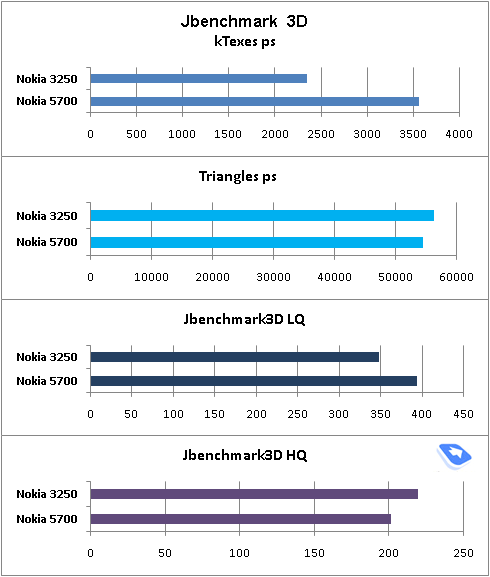
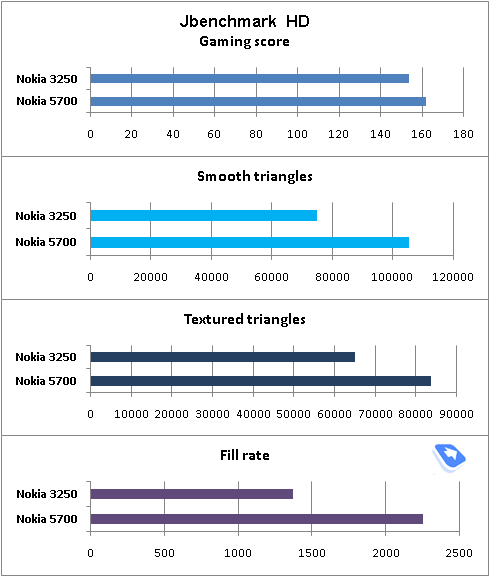
Back to the table of contents >>> Nokia 5700 versus Nokia 3250
Technically, a face-off like this makes no sense, since these two belong to different generations and the Nokia 5700 landed here with the purpose of replacing the Nokia 3250 in the range. But here we are dealing with that rare case when some part of the Nokia 3250 users might go for an upgrade, so they will appreciate this comparison.
|
Nokia 5700 |
Nokia 3250 |
Size, weight (mm, grams) |
108.2x50.5x17.3, 115 |
103.8x50x19.8, 130 |
Display |
TFT, 240õ320 pixels, 16 million colors |
TFT, 176x208 pixels, 262000 colors |
Camera |
2 Mpix CMOS |
2 Mpix CMOS, flash |
Built-in memory |
40 Mb |
10 Mb |
Battery |
BP-5M, Li-Pol, 900 mAh |
BP-6M, Li-Pol, 1100 mAh |
Audio jacks |
2.5 mm on casing, 3,5 mm on headset |
Pop Port, 3.5 mm on headset |
Loudspeakers |
Stereo-speakers |
Mono-speaker |
Operating system |
S60 3d Edition FP1 |
S60 3d Edition |
Remote |
Yes |
Yes |
Radio |
Yes |
Yes |






Back to the table of contents >>> Interface, preinstalled applications
This model runs on Feature Pack 1, so you can learn more about its core features here, and in this review we are focusing on the handset’s a idiosyncrasy.
The video section houses a handful of full-length clips, unique to each region, for Russia it is a couple of videos by local bands. Previously we have never seen this many clips on ordinary, production units. On the upside are music-related pictures, which are found in the corresponding section.
Themes – apart from Feature Pack 1 just-as-expected Nokia theme, there is a couple of music-heavy themes - Urban Beats, Neon Noise, Red Impression, Beat Boxer, Chroma Rhythm. A bevy of themes is the handset’s draw, meaning you can pick one to your liking. I really fell for Urban Beats, but as it turned out, it wasn’t really thought-out – in messages the font blends with the theme’s background. As a result, if you get a message only with a phone number in it, you won’t see it, thinking that it’s a blank message.
The main menu can pop up before you in one of the four views – List, Grid, Wheel, V-Shaped.
Audio Themes – probably this section was available before, but the Nokia 5700 is the first device where I actually spotted it. In addition to the visual themes, Nokia’s designers have tacked onto the phone audio themes as well, specifically four of them, which modify not only ring tones, but also message, calendar alert, alarm clock tune, and battery full-charge notification. Seems to be nothing to shout about, but how do you like menu navigation sounds, enter/exit audio themes, headset connection (be it wired or a wireless Bluetooth unit) and memory card extraction tunes? This feature is quite interesting and brings user settings to a new level, and as far as I remember, the market hasn’t seen anything like this as yet.
The games coming included with the 5700 are Marble and City Bloxx. Around ten extra games can be uploaded via Downloads and Nokia Zine.
Back to the table of contents >>> Impressions
The reception quality delivered by the handset brings about no problems – both ends of a call won’t have a hard time understanding each other. The volume of 64-chord polyphony is quite high, but if you go for mp3 tracks as alert tunes, quality of the embedded polyphony becomes of minor importance, really. The silent alert is average strength-wise, thus occasionally its efforts on getting you to know that someone is calling might end up in vain.
The model has proven to be quite odd in terms of its music department – the device comes equipped with a dedicated processor, but the quality is already on the top level and you can’t improve it by tossing earphones. Missing bass can be made up for with the equalizer, but it’s not a real way-out. I can’t say that the sonic experience delivered by the 5700 trumps other Nokia-branded devices, for example, it is on a par with Nokia 3250 in most cases (not with default earphones plugged in, of course). The Samsung-branded handsets sport better sounding; the Walkman line from Sony Ericsson is quite comparable and has the room for improvement via custom headphones. All in all, the Nokia 5700 seems to produce solid, basic sound, but it offers no bells and whistles in this sense, and of course you won’t find any sort of Hi-Fi sound quality in the device. I’d like to emphasize, that the majority of young people, who don’t own a top-notch player or haven’t got the previous experience of using one, will be more than content with this phone and its musical merits.
While in the speakerphone mode, the phone is fine for listening to your favorite tunes, watching videos, but it doesn’t have the makings to become heart of a party – its loudspeakers just don’t qualify.
Design of the XpressMusic range is definitely aimed at the youth, and some models obviously have schoolboys as the target demographic, for example the Nokia 5200. The main audience of the Nokia 5700 includes young people from 13 up to 22, other age groups will make smaller shares among the buyers. It is interesting, that compared to the Nokia 3250 the target age range has narrowed down, as the upper limit of its predecessor was about 26 years.
Such clear age segmentation has brought about the array of built-in applications, free downloadable games and applications. If we also count Nokia Zine here, this handset easily grabs the leadership in terms of number of free games, as you can get about 15, and the truth be told, these games are pretty decent. Custom content, such as video and tracks that vary by the region is also a pleasant thing.
The Nokia 5700 retails for about 420-450 USD, which is, in my opinion, not particularly adequate. Judged on its technological talents, it is quite steep, but bearing the fact that it comes with high-quality earphones with a remote (that come packaged with the 5700) as well as tons of content, in mind, this price tag seems to be reasonable. The Nokia 5700 is nearly beyond direct competition, as it is a smartphone housed in a quaint form-factor, and on top of that, positioned as a music-heavy solution. Technically, it rivals candybar-shaped Walkman handsets, but it is pretty odd rivalry. Sony Ericsson’s solutions, for example the Sony Ericsson W610i, lack smartphone functionally, yet sport somewhat better camera with comparable sound and no remote control. So it turns out that these are very different products that can hardly be called even indirect adversaries. The Sony Ericsson W950i doesn’t qualify as one, even though its price tag is equally hefty – it trumps the 5700 both in the sense of music and other capabilities, nevertheless it ships without camera.
So, we have failed to find a direct rival for the Nokia 5700, this youth-aimed smartphone is pretty offbeat and simply doesn’t have one. Perhaps, it won’t be a wild success and rather end up in the charts as a relatively popular model among its target demographic. But for the audience it targets, the 5700 is too pricey. Thinking of flamboyant press-releases on millions of shipped Nokia 3250s, I want to highlight a tiny detail. This kind of PR can be easily applied to this model as well, since reaching the one million mark for the market’s best company, which sells 400 times more devices per year, is not a big deal, really.
The device is relatively unstable due to its unique memory organization, when the player application is always on, and this restrains maximum number of pages open in the browser, occasionally the handset may reboot without any actions on your side – these things happened to our unit pretty often.
If you treat the Nokia 5700 as an attempt to design a real music-heavy handset, it doesn't look like they have succeeded. But if you forgo these music-related thoughts, and think of it as a mere youth phone, the 5700 manifests itself in a new light. This model will be utterly appealing to the youth, especially schoolboys and students. And because of its design it won’t suit just about any man above this age limit. After a month of my quality time with the device, when it was my primary handset, I figured out that its design didn’t fit my mentality, even given my sloppy image – Hawaiian shirts, ragged jeans, etc. That is, the model has its soul tailored to younger people, and there is nothing wrong with that. This handset, as a present for students, is, if not perfect, then definitely not far from this title.
Back to the table of contents >>>
Related links:
Eldar Murtazin ([email protected])
Translated by Oleg Kononosov ([email protected])
Published — 16 July 2007
Have something to add?! Write us... [email protected]
|
News:
[ 31-07 16:21 ]Sir Jony Ive: Apple Isn't In It For The Money
[ 31-07 13:34 ]Video: Nokia Designer Interviews
[ 31-07 13:10 ]RIM To Layoff 3,000 More Employees
[ 30-07 20:59 ]Video: iPhone 5 Housing Shown Off
[ 30-07 19:12 ]Android Fortunes Decline In U.S.
[ 25-07 16:18 ]Why Apple Is Suing Samsung?
[ 25-07 15:53 ]A Few Choice Quotes About Apple ... By Samsung
[ 23-07 20:25 ]Russian iOS Hacker Calls It A Day
[ 23-07 17:40 ]Video: It's Still Not Out, But Galaxy Note 10.1 Gets An Ad
[ 19-07 19:10 ]Another Loss For Nokia: $1 Billion Down In Q2
[ 19-07 17:22 ]British Judge Orders Apple To Run Ads Saying Samsung Did Not Copy Them
[ 19-07 16:57 ]iPhone 5 To Feature Nano-SIM Cards
[ 18-07 14:20 ]What The iPad Could Have Looked Like ...
[ 18-07 13:25 ]App Store Hack Is Still Going Strong Despite Apple's Best Efforts
[ 13-07 12:34 ]Infographic: The (Hypothetical) Sale Of RIM
[ 13-07 11:10 ]Video: iPhone Hacker Makes In-App Purchases Free
[ 12-07 19:50 ]iPhone 5 Images Leak Again
[ 12-07 17:51 ]Android Takes 50%+ Of U.S. And Europe
[ 11-07 16:02 ]Apple Involved In 60% Of Patent Suits
[ 11-07 13:14 ]Video: Kindle Fire Gets A Jelly Bean
Subscribe
|
